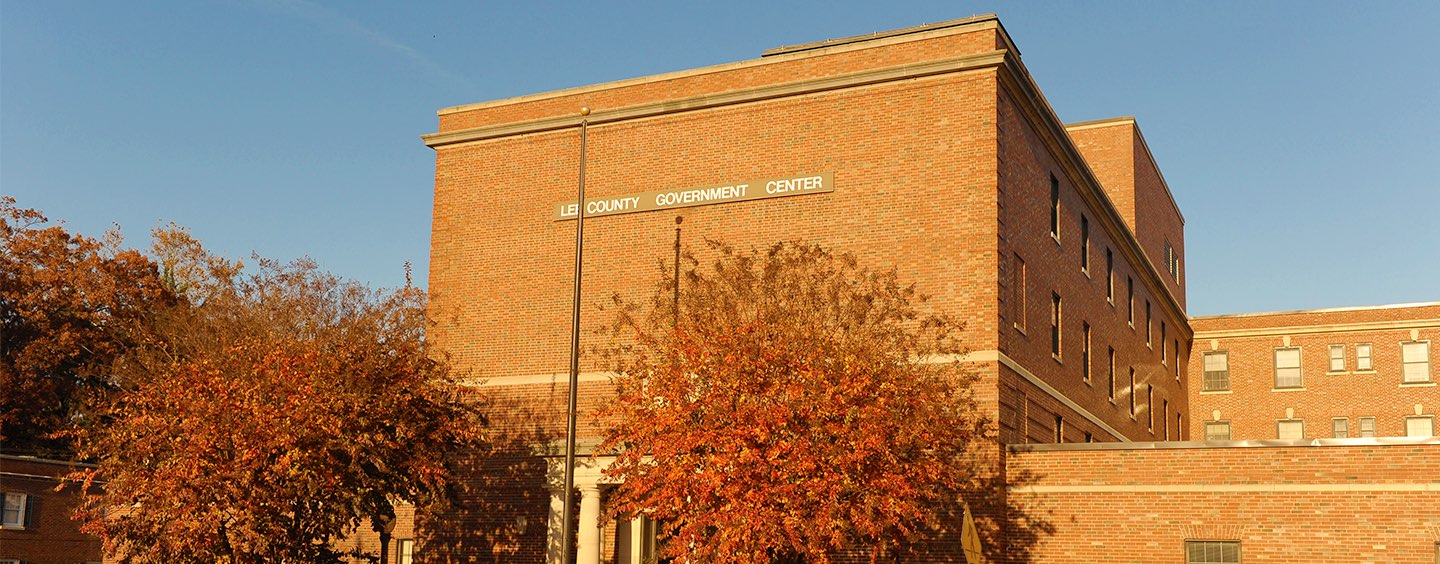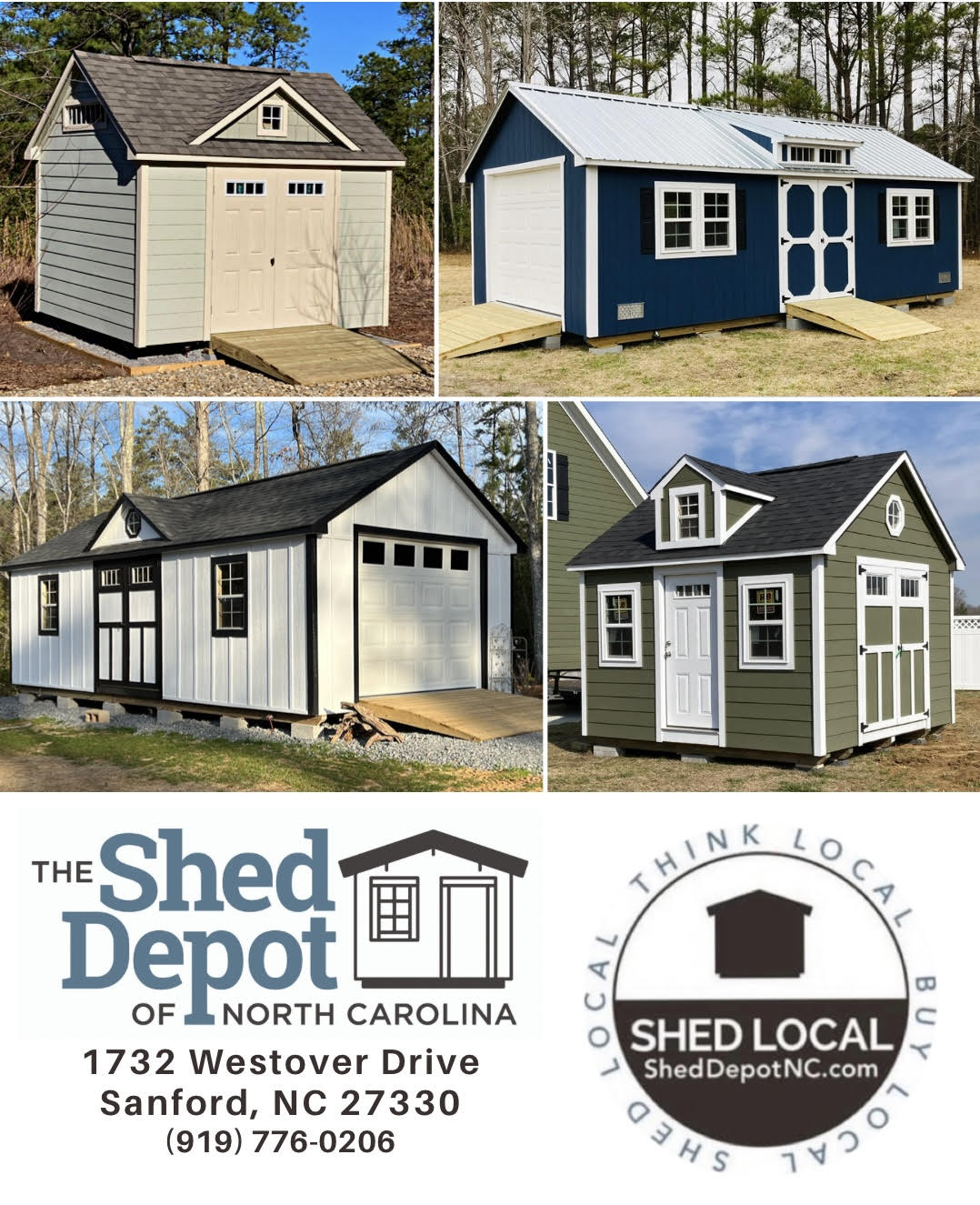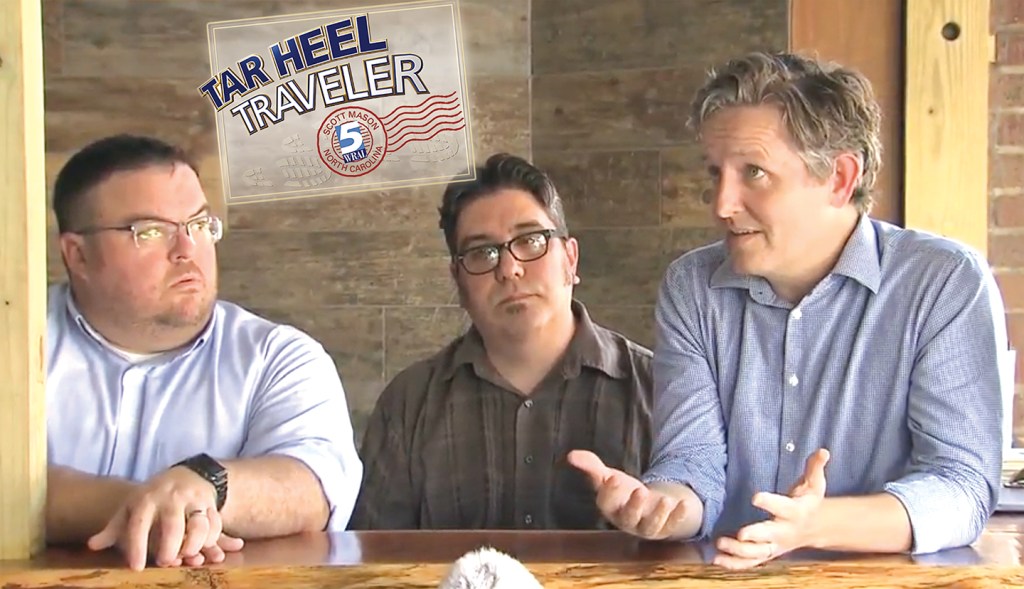Thousands of new homes, cheaper existing real estate and regular new job announcements have the experts projecting huge population growth in Sanford/Lee County over the next 10-30 years. The question is: Can we handle what’s coming?
By Billy Liggett, Richard Sullins and Gordon Anderson
Even before the March 29 announcement that a Vietnamese electric automaker was about to add a giant campus, a $4 billion economic investment and at least 7,500 jobs just 12 miles to the north in Moncure, Sanford was already on the verge of a population boom like it’s never seen before.
 Consider the following:
Consider the following:
- There are roughly 6,000 single-family home lots either currently under construction, have been approved at some level by city/county government or have been submitted for review by developers. Even if just half of those sites come to fruition, that’s 3,000 new homes and (using the 2.6 person-per-household average provided by the Census) 7,800 people expected in the next five years. The last time Sanford experienced growth like that in a TEN-year span was between 1990 and 2000.
- Lee County, with its current population of 63,285 people (roughly double Sanford’s 30,261) is already among the 20 fastest-growing counties in the state in the last 15 months, according to Carolina Demography, a nonprofit arm of the University of North Carolina at Chapel Hill that works in the numbers that define population trends within the state. That’s a growth rate of 1.3 percent since just the last Census count.
- Sanford is finally experiencing the side effects of Raleigh-Durham’s considerable growth. The Triangle area is the nation’s second-fastest growing metropolitan area in the nation, seeing a population spike of 23 percent between 2010-2019, according to Census figures. That’s better growth than Orlando, Houston, Dallas and Phoenix and trails only Austin, Texas, which grew by 29 percent in that time. Many who have migrated to Sanford from other parts of the country have come here because of lower land and housing costs.
- Through March, 56 job projects have been announced in Lee County since 2014, creating 3,563 new jobs with capital announced investments exceeding $1.66 billion. In the last eight years, the county’s tax base has increased by just over a billion dollars, and the average annual wage within the County has grown from $38,000 to $46,000.
Sanford has been “primed” for growth like this before. Around 2010, the city and Lee County prepared for families expected to move here as part of BRAC (Base Realignment and Closure), which transferred thousands of military personnel and their families to Fort Bragg. While the southwestern edge of Harnett County and the southern portion of Lee County saw residential and commercial growth, Sanford did not experience the big spike some had projected.
This, however, feels different.
“What we have that cities to the north of us don’t is open land,” said Don Kovasckitz, strategic services planner for the City of Sanford. “Those developments to the north and south and all around Raleigh are all taken up, and we’ve got all this open, affordable property. And it takes very little time to get to Raleigh or Fayetteville from here, which people are beginning to realize.”
A good example is Galvin’s Ridge, the large subdivision that could hold up to nearly 1,000 homes off of U.S. 1 and Colon Road in the next five years that has razed hundreds of acres of land and is in the process of building its first 100 structures. That land — which is roughly 15 minutes from Apex, 20 minutes from Cary and 30 minutes from downtown Raleigh — will be a 10-minute drive to the large multi-sports complex the county plans to build near the U.S. 421 bypass and Broadway Road in the next two years. That same bypass will, in the near future, become part of the I-685 extension that will connect Greensboro and the Triad region with I-95 near Fayetteville.
Sanford’s going to look very different in the next five to 10 years. The question is: Are we ready to handle what’s coming?

IT’S ALREADY BEGUN
Alyssa and Evan Riley moved to Sanford from Raleigh in January 2021 after signing a contract to build a home the previous summer. Evan had been working as a process engineer for Pfizer in Sanford for the previous two years while Alyssa attended Campbell University School of Law close to home in downtown Raleigh.
Their decision to build a home in Sanford was sparked by the pandemic, as the couple, their dogs and their 7-year-old son was stuck at home and couldn’t enjoy the amenities that made living in a large city so fun.
“Ideally, we wanted to be closer to RTP, but Sanford’s home and land prices were so low at the time. We saw moving here as an investment on two fronts,” Alyssa said. “[We knew] this area was going to be wrapped up in Raleigh’s expansion, so home prices would go higher, and it was a good opportunity to move our daughter to a more walkable, suburban area.”
Sanford also wasn’t the first choice for Renee and Timothy McRae and their children when they decided to buy a home seven months ago. Timothy worked in Raleigh, but the family was looking for a city that offered a better cost-of-living rate while remaining commutable to his job.
Sanford has seen home prices rise considerably in the last year, but at nowhere near the rate of Raleigh and its immediate suburbs. According to a recent WRAL report, as of March 28, only 92 single-family homes under $500,000 were on the market in Raleigh’s city limits. To make matters worse, home values and property taxes continue to rise in Wake County — pricing out many middle-class families looking to move to the Triangle area.
The McRaes found value in moving to Sanford, and seven months later, they’re happy with the decision.
“I love how quiet it is. The traffic is low, but the restaurant selection is horrible,” Renee said with a laugh. “But if you look at the same size home compared to Raleigh, I think I would have ended up paying double for a home had we chosen the city.”
Affordability was a big factor in drawing families like the McRaes and Rileys, and it’s a big factor in Sanford’s recent uptick in population with thousands of new single-family homes still months and years away. Carolina Demography’s 2021 report released in March showed a 1.3-percent growth rate for Lee County since the 2020 Census report.
That level of growth is something county leaders haven’t seen in years. Granted, 1.3 percent may seem like an unimpressive number, but it’s a percentage that reflects growth that has taken place just over a 12-month time frame. In that same time, 80 more babies were born than the total number of people who died in Lee County, and 773 more people moved into the county than moved out.

The “boom” level growth is coming. Carolina Demography projects Lee County will grow by 37 percent between now and 2050. That rate is higher than North Carolina’s projected population growth — 32 percent — over the same period. The 10.4 million people living in North Carolina is projected to become 13.8 million in 2050.
The city and county’s current housing situation is in no position to handle 24,000 additional people over the next three decades. That’s why announcements of new large-scale, high-density subdvisions are being made on a regular basis.
The aforementioned Galvin’s Ridge will be the largest development to come to Sanford since Carolina Trace in the 1970s. Located just off of U.S. 1 and Colon Road — across from Enterprise Park and Astellas Therapeutics and just five minutes from VinFast’s future campus in Moncure — Galvin’s Ridge could hold up to 995 homes should it reach capacity (which alone would mean an 8 percent population increase for the City of Sanford).
Laurel Oaks — like Galvin’s Ridge a community of D.R. Horton-built homes — is expected to feature 625 homes on 210 acres in south Sanford along N.C. 87 a few miles north of Carolina Trace.
Ashby Village (near Lowe’s Home Improvement) and Adams Village (behind the WalMart SuperCenter) will be mixed-use communities with single-family homes, apartments, townhomes and commercial buildings. The two communities, according to plans provided by Raleigh-based Trademark Properties, would combine to add an additional 1,000 residential lots.
Land has been razed for two 100-plus-unit subdivisions, 78 South (on Tramway Road between Southern Lee High School and Jonesboro Heights) and the Glen at Cool Springs (a controversial development near Westlake Downs that was met with protests by many residents of that community).
Further down the road and, if it comes to fruition, potentially as ambitious as Galvin’s Ridge, the Midtown Village South subdivision would add 735 new houses and 170 townhomes on 288 acres along the U.S. 421 bypass between Colon and Lower Moncure roads. Plans for Midtown Village South were first presented to the city at a public hearing on Feb. 15.
New housing’s domino effect will be new businesses (retail, restaurants and recreation) — something Alyssa Riley is looking forward to in her new city.
“We miss typical suburb shopping like Target, access to higher quality restaurants and having that younger, upbeat vibe. Admittedly, when we go to a fancy dinner or have a date night, we find ourselves driving to Southern Pines or Raleigh … although as a native Californian, Sanford’s taco establishments are excellent,” Riley said. “But I foresee a lot of changes on these fronts.”
She said she’s looking forward to more boutiques, restaurants, breweries and activities in Sanford and is already seeing signs of growth in downtown Sanford. She hopes Sanford’s amenities grow to suit the new population.
“We have had friends joke with us about moving all the way out here, but when they come and sit on a quiet patio looking out over a big yard for under $500,000, I think they get it,” she said. “So far, I think this has been a good investment for us. If the area can be built up to support this new population of people, I think we might find ourselves staying here for the indefinite future.”

CAN WE HANDLE IT?
Sanford, Lee County and the Sanford Area Growth Alliance (SAGA), with the assistance of state officials, have created an economic development engine that is the envy of every other counties in North Carolina. The 56 job projects that have been announced in Lee County since 2014 have created 3,563 new jobs and a capital investment of $1.66 billion.
And in the last eight years, the county’s tax base has increased by just over a billion dollars. The average annual wage within the county has grown from $38,000 to $46,000.
Those are the kinds of statistics that city and county leaders have to work with as they plan for the growth that is already here and the growth that is coming. But more than just approving new housing developments and annexations and the idea of new schools, leaders have to know or anticipate where that growth is most likely to occur.
And they have to be right — otherwise, millions of dollars in planning and construction will be wasted.
Take schools, for example. County Manager John Crumpton said growth patterns for school-age children are becoming harder to predict, and the growth of private and charter schools — in addition to the rising number of home-schooled children — is making it difficult to predict when and where a new school should be built.
“From the time a site is chosen until the doors open, it can take up to 36 months to build a school,” Crumpton said. “By purchasing and holding the land in advance of the growth, the board of education and county can reduce that building schedule by six to 12 months. This is why purchasing sites now is important.”
How does a growing county like Lee decide how, where and when to pull the trigger on building a new school? Crumpton said it’s not the simple task that you might think.
“The schools have capacity at all three levels — elementary, middle and high,” he said. “Until this year, the county’s birth rate was relatively flat, and deaths had outpaced births. That trend is starting to turn, and natural growth is increasing. But our growth will be more impacted by people relocating from other areas.”
Crumpton said estimating the number of children coming to Lee County is a guess.
“What we can do is monitor the rate of growth of ADM [average daily membership, a measure of school usage] in Lee County. ADM growth in the K-12 system determines when we’ll know that we need to move on constructing the next school and at what level,” he added. “Based on the anticipated growth, we estimate that the school system will need capacity in the next five years and then moving forward, it will become a more regular occurrence — maybe two to three years in between schools.
“The county is building debt capacity to address this growth in the future.”

Crumpton will be meeting in the coming months with Lee County Superintendent of Schools Andy Bryan and local officials to pinpoint areas where the coming growth is most likely to occur and determine the properties where new schools might be constructed.
Enrollment in Lee County Schools has dropped by about 800 students since 2015, and both Crumpton and Bryan believe this is a temporary circumstance brought on “by lower birth rates, school choice and the pandemic,” according to Bryan.
“We believe student numbers will rebound, and our board has a new elementary school in the Capital Improvement Plan,” he said. “With future growth projections, we also expect that there will probably be a need for a new middle and high school as well.”
Where could those new schools go? One possibility is East Sanford, an area that is growing faster than any other area of the city and directly connected to Sanford’s downtown area, where the city has been working for the past several years on a renewal plan.
Outgoing Mayor Chet Mann said the next big step for downtown will be the creation of a “Mobility Hub,” a logical step between now and the creation of the S-Line commuter train that will eventually provide daily passenger and freight service between Sanford, Raleigh and as far north as Roanoke Rapids.
Mann said the Mobility Hub would be a place where you could come to rent a bike, ride or share a scooter, or charge your electric car and learn about multimodal transportation. It will serve as a means of introducing Sanford to a form of life that involves a form of transportation other than an automobile when living and working in the downtown area.
Council member and Sanford mayoral candidate Rebecca Wyhof Salmon said recently the idea for stream restoration of Little Buffalo Creek could be a starting point for linking downtown with the East: “A place to launch off in reaching out to distressed neighborhoods like East Sanford where the future is going to come out of.”
Salmon’s fellow council member and opponent in the mayor’s race, Sam Gaskins, has much the same vision for downtown and East Sanford.
“That part of the city already has in place a great sidewalk system and bike lanes,” he said. “And what we ultimately want to get to is having folks see both East Sanford and downtown as places for multimodal transportation, with lots of bikes where people can rent and alternate forms of transportation like electric automobiles and scooters that visitors can rent as well that will take them that last mile of their journey within the city.”
Another area where new schools could potentially be situated is the northern part of Sanford and the county that stretches toward the boundary with Chatham County, where the brunt of new home construction is scheduled to happen in Lee County.
The aforementioned developments — in addition to Brookshire, the Village of Cumnock and Hawkins Walk — surround new industries located in the northern part of the city like Bharat Forge, Service Offsite Solutions and the growing numbers of industries located at the Central Carolina Enterprise Park, where thousands of new jobs will be located and where construction on the city’s fifth fire station will begin in January 2023 at a cost of $5.58 million.
A third area where growth and expansion are likely to take place lies along the Tramway Road corridor and then south along N.C. 87. There, the new 78 South development is well under way, as well as Ryder Downs, Ashby Commons on Horner Boulevard, and Laurel Oaks and South Park multi-family homes near Carolina Trace.
It’s a safe bet that several schools will be built within the next decade, perhaps within each of these areas, and even more after that. And when it happens, Bryan said the process will be the same.
“As when W. B. Wicker Elementary School was built, we will work with the county manager and Strategic Services to identify areas of county growth and potential sites for new schools,” he said. “The board of education will determine a priority list of sites and make a recommendation to the board of commissioners that will lead to discussions about next steps. As always, planning for future schools is a collaborative process.”
The city has made a concerted effort, through the efforts of Downtown Sanford, Inc. and its executive director, Kelli Laudate, to train new potential entrepreneurs, give them the skills that they will need to succeed in business and help to fill the empty business spaces in the downtown area. Those efforts have been successful. Laudate told the city council early in March that every single building in the downtown area is now either filled or undergoing renovation for occupation.
Mann told the city council how important this achievement is for the downtown area’s continued growth at a recent Council meeting.
“Our largest buildings are going under some form of renovation and will be rolling out over the next year or two, depending on the theme or what it is,” Mann said.
“I am very pleased to tell you that our downtown is full and if you wanted in, you should have bought earlier, because now you are going to pay more, which is a good thing for all citizens because we did exactly what the revitalization plan was for, which was to turn a ‘C’ space into a ‘B’ space, and a ‘B’ space into an ‘A’ space. And we’ve done that.”
Speaking on his “Open for Business” platform that he ran on when first elected in 2013, the mayor said, “To see how well the agenda has worked, you can look down Chatham Street and see the Koury Building, which for years had been a very tough situation for the city. I can’t remember how many square feet it is, but it’s several hundred thousand. It’s under new management and ownership from Legacy Homes and they will begin to build cabinets, custom cabinetry, and homes products for their business and also for retail sales.”
City and county leaders implement the plans they develop by allocating tax dollars that its residents have paid as part of their fair share of living here. And though long-range plans may have forecast growth for decades at a time, funding that growth is a one year at a time enterprise, as Crumpton explained.
“In this year’s budget, the commissioners’ No. 1 priority is to lower taxes,” he said. “Balancing a budget while increasing funding and lowering the tax rate is tricky. We did it last year and believe we can do it again this year. When we look at our funding partners’ budgets, we look at their other revenue sources, compare our funding levels to other counties that share a similar tax base and population and prioritize the requests.
“One thing we know is that when we build new facilities, we will have an increase in operating expenditures. So, the commissioners’ commitments to the community college, library and parks and recreation projects will take priority over other requests for funding at this time. It is a complicated puzzle, and our growth makes it more of a challenge — for us and everyone we fund.”
MAINTAINING SANFORD’S CHARACTER
Marshall Downey, director of Sanford’s Planning & Development Department, keeps a running count of all the housing and commercial projects that have either been approved or are in the queue. He’s been a busy man in the last few years.
Today, the city has about 6,200 single-family housing lots either approved or under review. Even if just half of those homes come to fruition, that’s 3,100 lots, multiplied by 2.6 (the average household in the U.S.), and there’s 8,060 new people in new homes living in Sanford very soon. And that’s a conservative number.
One benefit of the influx of new homes and people, according to Downey, is that the city and county have the luxury of being more selective in what kind of developments get approval and what features they must include in order to earn approval.
“There’s some concern out there that Sanford will grow too much and lose its character,” Downey said. “So it’s important that we are selective in what we promote — we need to maintain our character and hold on to what makes Sanford unique.”
Downey says the city can do that by updating its zoning codes. The city council has directed Planning to “raise the bar” on UDO standards.
“More sidewalks, more tree-lined streets,” Downey says. “More open space. More active space. When new projects come in, we can set the bar higher.”
Also important is the word “diversity.” When large projects with more than 125 homes come in, the city wants those houses to be diverse in terms of look and design. In other words, fewer “cookie cutter” neighborhood plans.
“Diversity, walkability, streetscapes … these are important moving forward,” he says. “We can set those standards now and maintain our character.”
NEW TO SANFORD | TESTIMONIALS
“We felt like Sanford was a better fit for our family than Pittsboro was. Sanford seems more family friendly. People we knew in the greater Raleigh area also recommended Sanford to us over other locations. My impression is that overall, Sanford is a very friendly community. [Our family] has been quite happy with our choice to move here.” — KerryAnn Foster, who moved to Sanford with her husband and two teenagers in 2020 from Asheville after a job offer in Pittsboro
“I was renting in Cary, and living out there was beginning to be too much. And with (at the time) rates being very low, I decided to look for a home. [Sanford] has been great to be honest. The house I bought is a fixer-upper, so I stay busy with that and my kids. The open space out here has been enjoyable. — Steve Coker, who moved to Broadway back in January
“I grew up in Broadway, and I moved back [from Greensboro] because I found a more affordable apartment with more square footage. The timing seemed right. Since I left, I noticed more businesses in Lee County. Parks being renovated. Traffic stops being added. The safety and concerns of the community have been heard, quite frankly. I like the idea of raising my daughter in my hometown.” — Kathy Rivera, who left her hometown back in 2018 and moved back recently with her daughter
“It is exciting to see the growth of Sanford. My first impression would be … this is a nice little town that could grow and become a nice big town. I can see that happening already.” — Kathy Simmel, who left Ocean Isle Beach over a year ago (after living there for 20 years) to be closer to family living in the Buffalo Lakes area





















